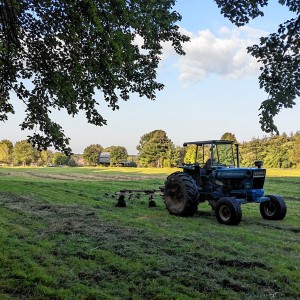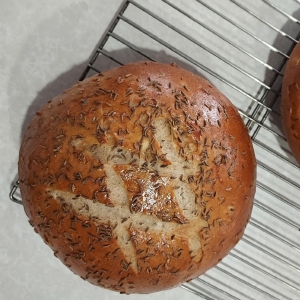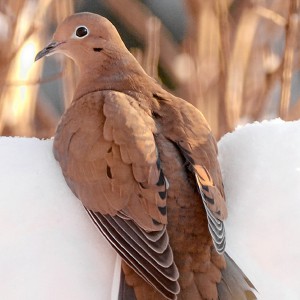Best Bites: A taste of Old San Juan in Holyoke: Rincón Boricua ‘my favorite Puerto Rican restaurant in the continental United States’
| Published: 08-25-2023 12:48 PM |
I never thought I’d lead off a restaurant review with a swoon over a non-alcoholic cocktail. But the virgin piña colada I tried at my last visit to RincónBoricua in Holyoke, my favorite Puerto Rican restaurant in the continental United States, was such a treat that I didn’t miss the rum at all.
Instead, I missed Puerto Rico. But not too much: for a couple hours, my incredible meal brought me right back there.
To be fair, the virgin piña colada has always had a special place in my heart. From my first childhood sip, it was the best drink in the world. I’d get to order one whenever the adults ordered alcoholic drinks. I knew there was some abstract way in which alcohol made adults feel good, but no combination of ingredients could have possibly made me feel better than this frozen milkshake of pineapple juice and cream of coconut, topped with a swirl of whipped cream and a radioactive-red cocktail cherry.
As I grew older, I never thought much about the origins of the piña colada. I vaguely associated it with tiki bars and Mexican beaches. But two years ago, on my first trip to Puerto Rico since I was an infant, I was surprised to learn that this legendary cocktail was actually invented — or perhaps “discovered,” as one might say about a fundamental mathematical theorem or timeless classical melody — in Old San Juan.
The discovery occurred in 1963, just 13 years before I was born, and the genius behind it was Don RamónPortasMingot, a bartender at a restaurant called Barrachina.
That restaurant is still in business, and in the lovely company of my friends Alejandra and Marcos, I tried the piña colada there. It was a decidedly non-virgin specimen, with aged Puerto Rican rum. The drink was garnished with slices of fresh pineapple and a blue paper umbrella, and it was delicious. But it came in a plastic cup, and it cost $12.
At RincónBoricua, on the other hand, the piña colada comes in a proper glass, and the price of bliss is $4.50. The friendly folks here in Holyoke get the creamy consistency and blending just right, avoiding the excessive or insufficiently integrated ice that too often kills the irresistible richness of this drink.
I’ll take RincónBoricua’spiña colada over Barrachina’s original any day. It’s a luxurious accompaniment to the wonderful Puerto Rican cuisine coming from this kitchen, which stands up to some of the best I’ve tasted in San Juan.
Article continues after...
Yesterday's Most Read Articles
Rincón means corner, and Boricua is slang for puertorriqueño (Puerto Rican). Although the restaurant does sit on a street corner, it’s an understated name for the place, which goes above and beyond with its vibe. Here lies a cozy, unsung gem that’s chill enough for an easy lunch but romantic enough for a dinner date.
The first thing you might notice after stepping into the space in downtown Holyoke is a loving attention to detail that enchants every inch of the interior of the restaurant, from floor to ceiling. The enchantment begins in the front room, where kitschy faux-outdoor awnings create a miniature street scene, lending an escapist atmosphere even to the simple experience of picking up a take-out sandwich, ice cream, pastry, or food by the pound, scooped out of steam trays.
The creative décor develops further as you continue into the main dining room, whose wood paneling, natural-form tables, and wide-beamed floors are stained in luscious shades of tobacco and amber. Comfortable striped upholstery lines the booths. On the walls, palm-lined tropical beach scenes painted onto exposed brick, Puerto Rican flags, and other emblems of island nostalgia peek out from between fireplace-style stone columns, wainscoting, and delicately arched floor-to-ceiling windows. Look closely and you might spot a guitar-playing frog.
You should begin your Caribbean culinary adventure here with alcapurrias, one of the best and most unique of all Puerto Rican classics. These are fritters battered and fried to the deep color of coffee. Locked inside — and unable to escape until your first bite — are savory spiced ground beef and yuca, which melt together into a gelatinous pudding-like mixture that contrasts, to great effect, with the fritter’s dark, crispy coating.
My friend Damaris, who introduced me to this place, taught me — correctly — that it is a crime to come to Rincón Boricua and miss the bistec encebollado. This is a ceramic soup cup full of tenderized cube steak with onions. Sofrito, the garlic-onion-and-pepper sauté that forms the base of many Puerto Rican dishes, is a key base element. But what makes this dish so unique among steak preparations is its bold vinegar marinade, which infuses the steak with refreshing acidity.
The bistec plays particularly well with sides of habichuelas guisadas, reddened by tomato into the pork-and-bean soup of your dreams; and tender, sticky, bright-white yuca, precisely prepared so it’s not at all stringy.
My favorite side of all, though, is arroz con salcichas. This is a cup of moist yellow Spanish rice richly simmered with sofrito and studded, just beneath the surface, with little gifts of sausage that strike a sensational balance of flavors and textures: offal-y but not a bit stinky, chewy but not a bit leathery.
Other forms of sofrito-infused yellow rice include arroz con gandules (with red beans and bits of pork) and, on some days, arroz tropical (with peas, carrots, and green beans).
There are many more highlights on this unpretentious, haphazardly fonted, reasonably priced menu of home cooking. Pernil (roast pork) comes in a generous portion, with plenty of crispy skin cracklings that should be combined with every bite of juicy pulled-pork-like meat. Beef lasagna is a satisfyingly cheesy interpretation, a deep dive into Latin-Italian fusion.
Plantains, the short, stubby cousin of bananas, are another essential element of Puerto Rican cuisine. Maduros (ripe yellow plantains) are a soft, sweetly caramelized treat. More savory green plantains can be enjoyed in the form of tostones (chips), or, better yet, mashed and rolled into a ball called mofongo.
You can find different versions of mofongo all over the Caribbean, but the Puerto Rican version is delightfully heavy on the garlic. It makes for a hearty main course, with the giant ball of plantain goodness in the middle of the plate swimming in and absorbing the juices and sauces of whatever’s around it. The various mofongo options at Rincón Boricua include not only bistec encebollado and pernil, but also camarones en salsa de ajo (garlic shrimp), sierra (pickled fish), pollo asado (roast chicken), pollo guisado (stewed chicken), and carne frita (deep-fried pork chunks).
You can also order bolitas de mofongo (miniature mofongo balls), as a side dish, for 25-cents each.
What, in this country, still costs 25-cents? Are these marbles of plantain-and-garlic joy the last substantial thing left, anywhere, for that price?
The unassuming value and flavor in these 25-cent bolitas de mofongo comes right to the heart of the matter. For the greatest Puerto Rican cooking is found not in minimalist fine-dining temples with sommeliers and arrays of silverware, but rather in homey places like this, where flavors and traditional recipes are passed down through the generations, brought to the table with a mega-dose of love, channeled straight from the family home and into your open heart.
Robin Goldstein is the author of “The Menu: Restaurant Guide to Northampton, Amherst, and the Five-College Area.” He serves remotely on the agricultural economics faculty of the University of California, Davis. He can be reached at rgoldstein@ucdavis.edu.
]]>

 Valley Bounty: Grass-fed animals that feed the grass: Gwydyr Farm in Southampton focuses on ‘restoring the connection between land, food and people’
Valley Bounty: Grass-fed animals that feed the grass: Gwydyr Farm in Southampton focuses on ‘restoring the connection between land, food and people’ Weekly Food Photo Contest: This week’s winner: Mary Chicoine of Easthampton
Weekly Food Photo Contest: This week’s winner: Mary Chicoine of Easthampton  Speaking of Nature: A romantic evening for two birders — To hear the wonderful sounds of the Saw-whet Owl one must go outside at night
Speaking of Nature: A romantic evening for two birders — To hear the wonderful sounds of the Saw-whet Owl one must go outside at night Speaking of Nature: Where have all the birds gone?: They’re there, and here’s a handy tool to keep track of their appearances
Speaking of Nature: Where have all the birds gone?: They’re there, and here’s a handy tool to keep track of their appearances
